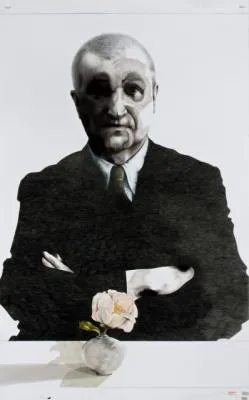
E.O. Hoppé
Cecil Beaton called him, “The Master.” Emil Otto Hoppé (1878–1972) was one of the most important art and documentary photographers of the modern era, and his artistic accomplishments rivaled those of his peers Alfred Stieglitz (1864-1946), Edward Steichen (1879-1973), and Walker Evans (1903-1975). E. O. Hoppé: Society, Studio, and Street Photographs, 1909–1945 exhibits vintage prints that reveal the breadth of his interests and travels, and his intimate relationship with the Ballets Russes and the era's most accomplished writers and artists.
Born in Munich to a wealthy family, Hoppé moved to London in 1902 to take a job at Deutsche Bank. It was during this time that he began studying photography as a hobby, and by 1903 he was elected to the Royal Photographic Society. In 1907 Hoppé opened his first London studio, and in 1910 he held his first one-person exhibition of over seventy photographs in London. In 1911, Ballets Russes founder Sergei Diaghilev designated Hoppé to photograph the company’s London productions. Hoppé’s intimate and lasting relationship with the Ballets Russes resulted in photographs of astonishing beauty and insight. In 1916, he published editorial and society photographs in the inaugural issue of British Vogue.
Like his friend George Bernard Shaw, Hoppé was deeply interested in questions of class, race, and social mobility. Using a hidden camera, Hoppé photographed people in London’s growing, and sometimes closed, immigrant communities. Between 1920–1939 Hoppé used both hidden and studio cameras as he traveled the world documenting both wealthy and poor communities in the United States, Romania, Japan, India, Sri Lanka, Indonesia, Bali, Cuba, Jamaica, Africa, Australia, New Zealand, Poland, Bavaria, and Czechoslovakia. Many of Hoppé’s journeys were published in illustrated books.
This exhibition marks the rediscovery of Hoppé as a pivotal figure in modernist art. Drawn from the collections of the National Portrait Gallery and the E.O. Hoppé Archive in Pasadena, California, this exhibition brings together the best known prints of each photograph. After decades laying dormant in the Mansell Collection in London—where they were virtually unknown due to the fact that they were filed by subject and bore the name Dorien Leigh Ltd., Hoppé’s later business name—these prints are now being made accessible to the public for the first time. E. O. Hoppé: Society, Studio, and Street Photographs, 1909–1945 was organized by the National Portrait Gallery, London, and Curatorial Assistance Traveling Exhibitions (CATE), Pasadena, CA.
The exhibition has been organized for the Cooley Gallery by director Stephanie Snyder with Reed student interns: Eli Coplan, Chloe Jones, Jade Novarino, and Genevieve Ward, with additional participation by Reed English department students Rosie Dempsey, and Gabriel Zinn.